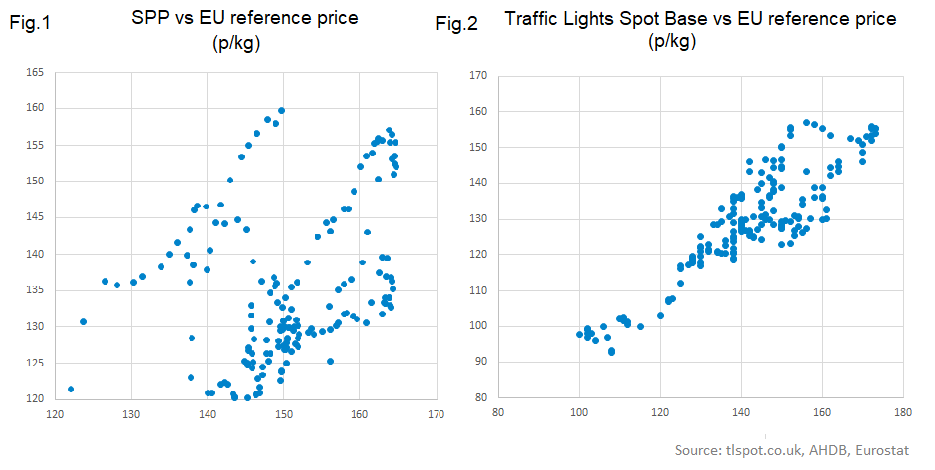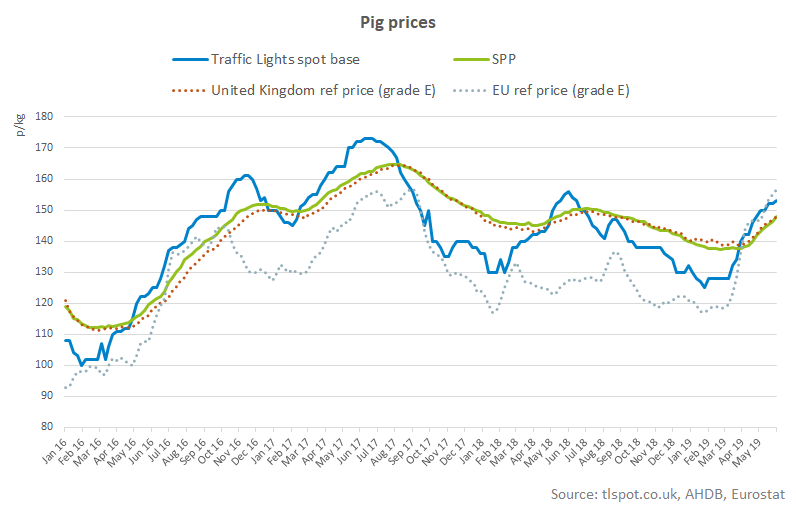What moves the SPP?
Monday, 8 July 2019
By Duncan Wyatt
EU pig prices have been rallying strongly since the end of March, apparently leaving the British Standard Pig Price (SPP) lagging behind. But given that so many GB contracts reference the SPP anyway, what causes it to move at all?
Firstly, let’s consider why the SPP features as the main reference price in many contracts.
Other commodity markets often have sizeable spot markets that generate reference prices. These spot markets are either centrally organised or have widely adopted common terms and conditions of trade. Metals, energy markets and some agricultural commodities trade this way. Market participants can either trade directly on the spot market or negotiate a long-term contract. Contracts typically still reference the spot market, but reduce exposure to volatility.
However, the spot market for pigs in Britain is only small. In the absence of another widely representative measure, it is quite understandable why the SPP is commonly used as a reference price in pig contracts.
How does this influence SPP behaviour?
With relatively few pigs traded on the spot market, we’d expect spot prices to make up only a limited share of the SPP in comparison to contract prices. If then, contract prices are heavily based on the previous week’s SPP, the effect of other factors that can move the market is dampened. This explains why the SPP is “slow” to move.
So, what does move the SPP?
This does not mean that the spot market for pigs isn’t influential. An indicative spot price for British pigs is the Traffic Lights Spot Base*.
We all know the British market is closely linked to the EU market. However, there is almost no relationship between movements in the SPP and European prices on a week-to-week basis (fig 1). A weak but positive relationship is seen over a longer term.

A much stronger positive relationship is present between the Traffic Lights Spot Base and European prices (Fig 2). So, perhaps we can think of the GB spot price as the way the British market transmits price signals about the supply/demand balance in the wider EU.

So, although spot prices represent only a small share of the prices that go into the SPP, they are probably the main factor that drives changes in the SPP. Of course, other factors included in some contracts will also play a part. These include variable weekly contributions from buyers and certain production costs.
The SPP calculation methodology is available on the AHDB website.
*The Traffic Lights Spot Base provides sellers who have one-off loads of spot pigs (as opposed to regular weekly supplies) with a realistic minimum base price.
Sign up for regular updates
Subscribe to receive pork market news straight to your inbox. Simply complete our online form.
While AHDB seeks to ensure that the information contained on this webpage is accurate at the time of publication, no warranty is given in respect of the information and data provided. You are responsible for how you use the information. To the maximum extent permitted by law, AHDB accepts no liability for loss, damage or injury howsoever caused or suffered (including that caused by negligence) directly or indirectly in relation to the information or data provided in this publication.
All intellectual property rights in the information and data on this webpage belong to or are licensed by AHDB. You are authorised to use such information for your internal business purposes only and you must not provide this information to any other third parties, including further publication of the information, or for commercial gain in any way whatsoever without the prior written permission of AHDB for each third party disclosure, publication or commercial arrangement. For more information, please see our Terms of Use and Privacy Notice or contact the Director of Corporate Affairs at info@ahdb.org.uk © Agriculture and Horticulture Development Board. All rights reserved.

